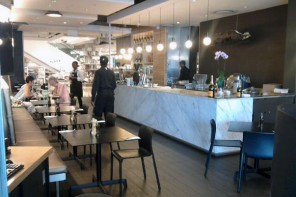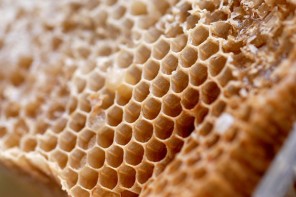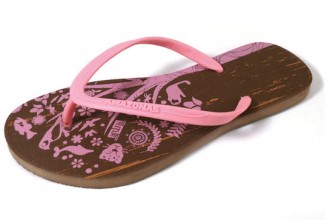The people of Kitakyushu are working together to create a recycling-oriented community that produces no waste
The name Kitakyushu is somewhat legendary in green circles. Once a highly-polluted industrial city in Japan, it cleaned itself up, thanks to the combined efforts of citizens, industries and government, and in 1990, received the Global 500 Award from the United Nations Environment Programme.
Kitakyushu is now a model city for sustainable development and environmental improvement – it was named such in 2006 by Time magazine – and visitors the world over flock there to learn how it turned from grey to green.
Today, Kitakyushu is known for its advanced recycling industries. In 1997, the city became a part of Japan’s eco-town project, which aims to create a “zero-emission system” where no waste would be produced. This is realised through waste recycling industries. There are now 26 eco-towns in Japan, of which Kitakyushu is the most notable.
“We aim to establish a resource circulating city,” says Taihei Shibata of the city’s environment bureau. “The idea of eco-town is to look at recycling as a viable industry, not just to handle waste disposal. So, it has two benefits … economy and waste management.”
In Kitakyushu, its 26 recycling industries are grouped at the Hibiki Recycling Area. The city has the most extensive range of recycling industries in Japan. There are factories recycling everything: tin foil into aluminium briquette; polystyrene into insulating material and construction aggregate; cooking oil and fats into animal feed, paint and biodiesel; medical waste into collection vessels, solid and concrete materials; paper into livestock litter and toilet rolls; and PET into raw material for new plastic products and polyester fibres. Some factories retrieve useful materials from discarded home appliances, office equipment and even pachinko machines. In the automobile recycling zone, seven car scrapping companies got together to achieve more efficient recycling of old vehicles, the first such attempt in Japan.
In Japan, the people are required by law to pay recycling and disposal fees for some of their discards – between ¥10,000 (R815) and ¥20,000 (R1, 631) for unwanted cars and ¥2,600 (R212) for a 16-inch TV.
Kitakyushu also boasts Japan’s first fluorescent tube recycling plant. It extracts glass, metal and mercury from unwanted lights, which can be hazardous if indiscriminately dumped, and reuse them to make new lights, glass products, paving materials, automotive wheels and building materials. About 35,000 fluorescent tubes are processed each day.
In one innovative reuse of waste, wood salvaged from construction sites and dismantled buildings are pulverised and processed with plastic scraps to form a hardy building material. The material has the texture of natural wood but the strength of plastic, and can be recycled countless times without deterioration in quality.
Ecowood Co produces over 5,000 tonnes of this “wood” annually, making it the largest salvaged wood production facility in Japan. Reusing scrap lumber helps prevent deforestation.
The city’s 17 research facilities conduct research and development on advanced waste disposal and recycling technologies, such as to turn food waste into polylactic acid to make biodegradable plastic.
Shibata explains the merits of clustering the recycling industries: “The plants supply each other with resources. Wastes are not always 100% recyclable. Those which cannot be recycled in one factory will be sent to another for treatment. By concentrating the factories together, we can increase recycling efficiency and make sure all wastes are treated. And having a designated area for recycling industries will also overcome objections from citizens who often protest to having such factories near them.”
Helping the climate
Since its establishment in 1997 until May 2009, ¥61bil has been invested in Kitakyushu, with the bulk of it coming from the private sector (¥43.1bil) and the balance from the federal and city governments. The recycling activities in Kitakyushu shave 150,000 tonnes of CO2 from the 16 million tonnes discharged in Kitakyushu annually.
The city’s emissions have dropped more than 3% from 1990 levels, with marked declines from industries. Emissions from households, businesses and transportation, however, are on the rise. To counter this trend, the city has set itself an ambitious target – it intends to halve its CO2 emissions in 2050, from 2005 levels. To do this, it is encouraging use of public transport, car-sharing, energy-efficient housing, renewable energy, and expanding greenery.
“The idea is to create a next generation that is low-carbon,” says Hiroyuki Kajihara, manager of the environmental policy division in the Kitakyushu Environmental Bureau. “So we will promote a lifestyle that eliminates waste and have measures to create a pollution-free environment.”
Kitakyushu boasts of Japan’s first commercial wind power generation. Each of the 10 turbines lining the coast has a capacity of 1,500kW, and the electricity is sold to Kyushu Electric Power. Some elementary schools and apartment blocks are also powered by solar energy systems, as part of the move towards a low-carbon society.
The city rewards green consumers. Eco-points are given to acknowledge environment-friendly practices, such as when one rejects plastic bags at stores. The eco-points, either in the form of stickers or reward points recorded in a credit card-like Eco-Card, can be redeemed for discount coupons, eco-friendly products or donated to non-profits. The funds for this will be covered by the retail industry. Some 120 eco-friendly products and services have also been identified, through the issuance of Eco-Premium label.
Kitakyushu’s green endeavours earned it the “model eco-town” award in 2008.
What an inspiration…!
Source: The star online
The liveeco team







